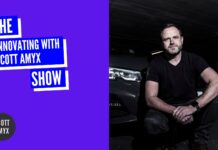
Consumer data is collected largely through tools like online metrics and surveys, but it is difficult to effectively gather information about customer engagement offline. Hard metrics on real emotional brand engagement have not been readily available for advertisers and marketers — until now. IoT devices provide enhanced capabilities to measure engagement, allowing businesses to develop richer customer profiles and create more effective marketing campaigns.
Engagement Redux
The tech tools and techniques used to acquire data on the Internet rely on the participant’s engagement with metrics such as total interactions, interaction rate, clicks, likes, follows and shares. Offline data collection is largely limited to the survey, which does not always deliver accurate representations of real consumer feeling. This is not to say that the current metrics lack value — indeed, they provide a foundation for approaching brand engagement. However, they fail to provide a complete picture of the consumer.
The Interactive Advertising Bureau defines three major forms of ad engagement as cognitive (changes in a customer’s awareness, interest and intent), emotional/affective (feelings elicited by the ad or campaign) and physical/behavioral (engagement that requires user-initiated interaction). Cognitive and emotional metrics are generated mainly through surveys, while behavioral data are drawn from the Web and social analytics. Online and offline, surveys form one of the largest components of data collection, but they are not without problems. Research has shown that issues like non-responses, language and cultural misunderstandings, technology and response issues, and personality/individual interaction can all result in the aggregation of inaccurate data.
Don’t Overdo It: Cognitive Load
Cognitive engagement is vital to the success of any brand. Cognitive load theory drives many campaigns with the idea that effective advertising triggers the intrinsic and germane loads while avoiding the extraneous load. A successful campaign never forces consumers to spend inordinate amounts of time trying to understand your product. The problem is that it is not always clear how to avoid burdening the consumer with an extraneous load.
Technology is cracking the code on cognitive load. Always-on, wearable computing interfaces that understand the user’s current task type and load are positioned enhance data collection with reliable information. For example, the Wearable Computing Lab at the Swiss Federal Institute of Technology in Zurich has tapped electrodermal activity to elucidate the stress from the cognitive load through EDA measurement against six classifiers. Other researchers are exploiting computer vision cameras to quantify blink patterns to estimate cognitive and perceptual loads.
Getting Emotional
Surveys are primarily used to measure emotional reactions (like brand perception, brand favorability and brand loyalty), yet they can overlook subtle cues that are vital to understanding authentic responses. Cues such as voice alterations, micro-expressions and other “non-verbal leakage” contain an enterprise’s treasure trove of insight. IoT devices can elucidate these types of cues to provide richer insights into actual human responses. For example, Affectiva’s software derives its emotion analytics from video facial recognition, which can analyze facial expressions instantaneously. Emotient (now owned by Apple) and Eyeris EmoVu are also using facial recognition and computer vision, and are able to examine a response right down to the micro-expression. Beyond Verbal uses voice analysis to decode emotions. Others, like Sentiance, are using wearables and smartphones to understand situational and contextual engagements to increase mobile conversion. Neuromarketing is experiencing a revolution: instead of simply using fMRIs to identify responses, biometrics, eye tracking, facial recognition and even EEG are being used to measure consumers’ emotional response to brand engagement. Innerscope Research (now part of Nielsen) and Ipsos are on the cutting edge of this trend.
IoT in Action
Wearables are of particular importance in recording and analyzing behavioral metrics since many of the online metrics can be recreated in an offline context. For example, shopping in a retail store takes on a new dimension when seen through tracking devices. Evaluating what the consumer looks at, how long she spends examining an item or how she interacts with the store, representatives or products can be transformed into useful profile data. Combining in-store data with that derived from other sources can give further insight into consumer behavior. For example, IBM’s use of weather data elucidated the insights that consumers were more likely to avoid purchasing ice cream when it was above 77°F (it might melt) and were more open to advertising on beautiful sunny days.
Consumer-Centered Engagement
Brands and enterprises need to embrace new forms of data collection to enhance the consumer experience, increase brand engagement and drive growing sales. IoT devices bring new capabilities and opportunities to develop firm metrics. Understanding real emotional engagement with a brand via cognitive, emotional and behavioral metrics can only take on validity once we have a more complete picture of consumer behavior — and then use that data to develop a customer-centered approach.
Refer to the full article on TechTarget. Published on January 21, 2016. Author Scott Amyx.

















